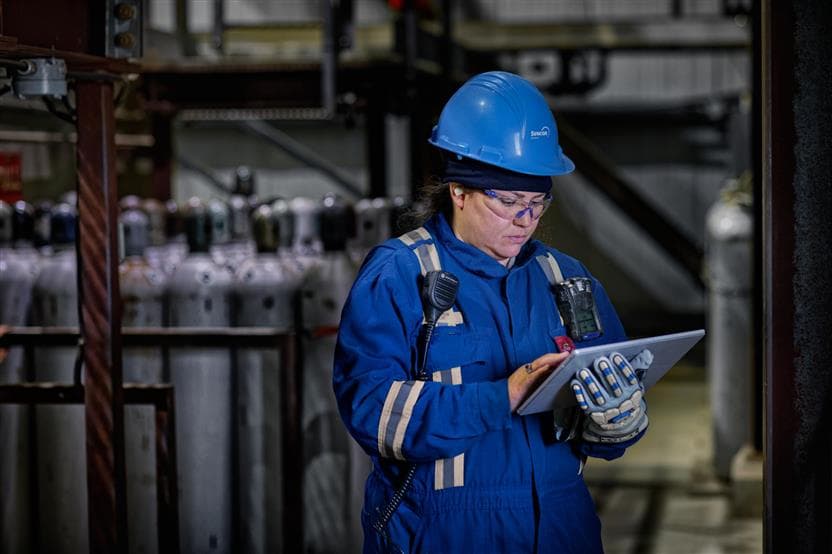Opportunities to reduce safety risks are always a priority and we are implementing technologies such as collision awareness and fatigue management systems to enhance safety at our facilities.
Once completed, we will be the first oil sands operator to execute a full-scale implementation of both collision awareness and fatigue detection technologies at our mine sites.
Collision awareness system
The collision awareness system is considered a 'game changer' in mine safety.
The system is designed to help heavy equipment operators by detecting potential collision risks and providing them with real-time information about other vehicles nearby. It uses vehicle-to-vehicle communications and GPS technology to track the position of equipped vehicles and displays this information on a screen in the vehicle operator’s cab.
The operator can see other vehicles nearby, the vehicle type, and how many meters they are away from the vehicle. Based on the vehicle’s speed and direction of travel, the system will trigger a visual and audible alert if it detects a potential collision risk.
Given our diversity of equipment and operating conditions in the mining area, this technology significantly enhances operator situational awareness, supplementing existing safety controls like operator training, operational procedures, and access restrictions.
The system is being installed in a phased approach across more than 1,000 vehicles and equipment at in our mining operations.
Fatigue detection
Within a shift work environment, fatigue is one of the leading causes of risk to operators.
Fatigue detection technology is an in-cab technology with a camera that monitors the operator’s head pose, eye closure and eye movements. The system activates an audio alarm and seat vibration in real-time when a micro-sleep or distraction event is detected.
Data from the system is sent to a monitoring center where trained personnel review and classify events. If a confirmed fatigue incident is identified, site personnel are contacted, and an internal procedure is activated to check on the health of the operator.
The fatigue detection system is now live across all our mine sites.
Autonomous haul truck technology
Autonomous haul trucks, which operate using GPS, wireless/LTE communication and perceptive technologies, offer a number of advantages over existing truck and shovel operations, including enhanced safety performance. They operate predictably and employ a suite of safety features like prescribed route mapping and obstacle detection systems.
Following a successful commercial-scale evaluation in 2018, we began a phased implementation of autonomous haulage systems (AHS) at our operated mine sites. Full implementation of AHS was completed at our North Steepbank mine in 2018 and at Fort Hills in 2020. We expect to complete the full implementation of AHS at the Oil Sands Base Millennium mine over the next four years.






